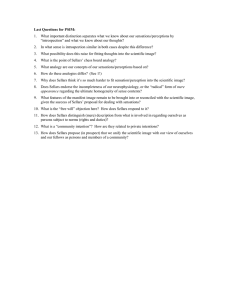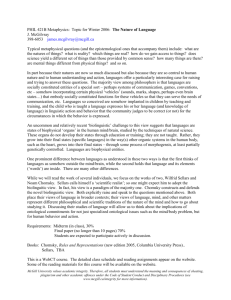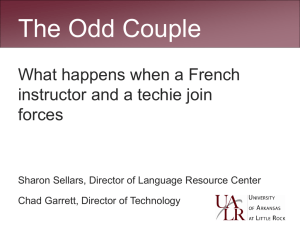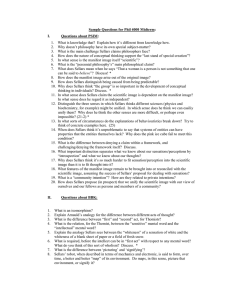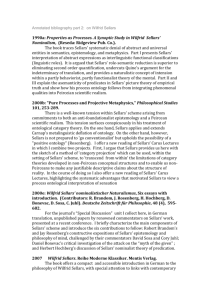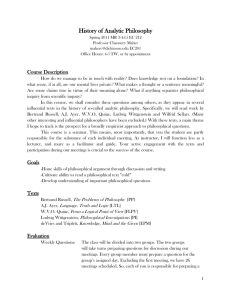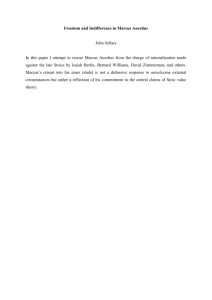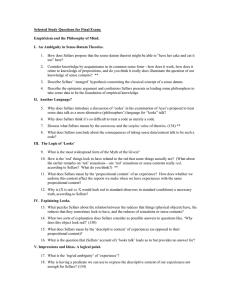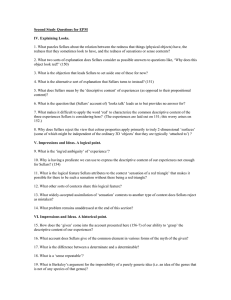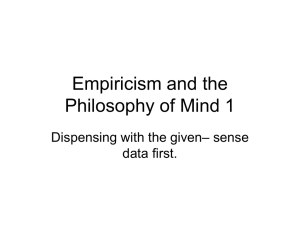PSIM Questions:
advertisement
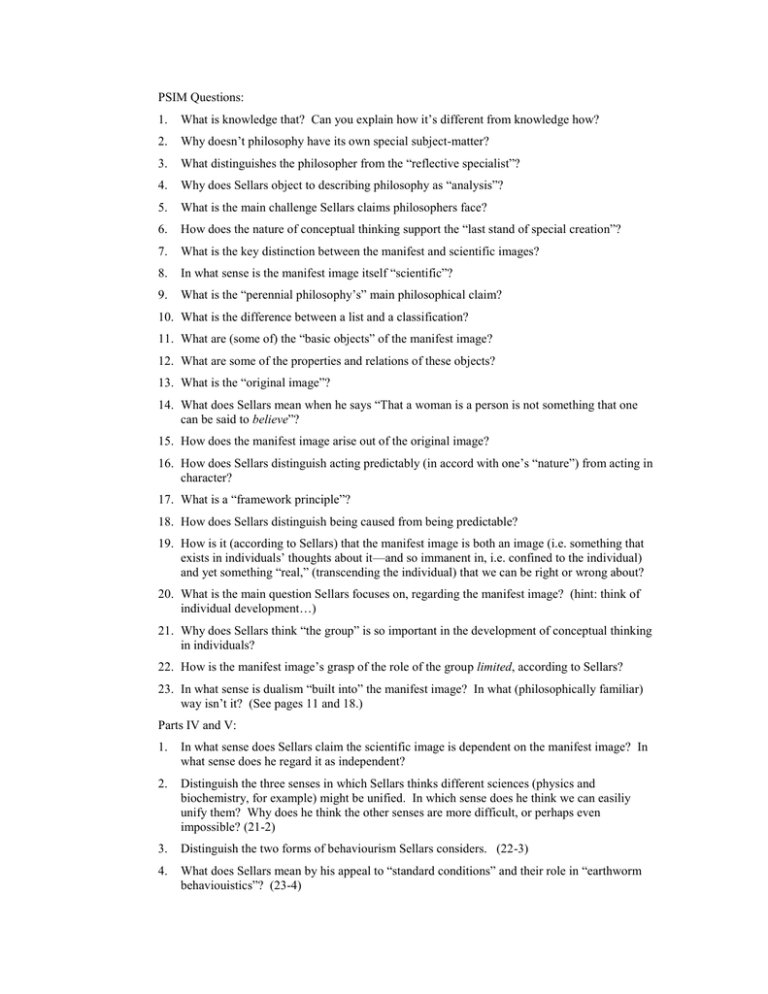
PSIM Questions: 1. What is knowledge that? Can you explain how it’s different from knowledge how? 2. Why doesn’t philosophy have its own special subject-matter? 3. What distinguishes the philosopher from the “reflective specialist”? 4. Why does Sellars object to describing philosophy as “analysis”? 5. What is the main challenge Sellars claims philosophers face? 6. How does the nature of conceptual thinking support the “last stand of special creation”? 7. What is the key distinction between the manifest and scientific images? 8. In what sense is the manifest image itself “scientific”? 9. What is the “perennial philosophy’s” main philosophical claim? 10. What is the difference between a list and a classification? 11. What are (some of) the “basic objects” of the manifest image? 12. What are some of the properties and relations of these objects? 13. What is the “original image”? 14. What does Sellars mean when he says “That a woman is a person is not something that one can be said to believe”? 15. How does the manifest image arise out of the original image? 16. How does Sellars distinguish acting predictably (in accord with one’s “nature”) from acting in character? 17. What is a “framework principle”? 18. How does Sellars distinguish being caused from being predictable? 19. How is it (according to Sellars) that the manifest image is both an image (i.e. something that exists in individuals’ thoughts about it—and so immanent in, i.e. confined to the individual) and yet something “real,” (transcending the individual) that we can be right or wrong about? 20. What is the main question Sellars focuses on, regarding the manifest image? (hint: think of individual development…) 21. Why does Sellars think “the group” is so important in the development of conceptual thinking in individuals? 22. How is the manifest image’s grasp of the role of the group limited, according to Sellars? 23. In what sense is dualism “built into” the manifest image? In what (philosophically familiar) way isn’t it? (See pages 11 and 18.) Parts IV and V: 1. In what sense does Sellars claim the scientific image is dependent on the manifest image? In what sense does he regard it as independent? 2. Distinguish the three senses in which Sellars thinks different sciences (physics and biochemistry, for example) might be unified. In which sense does he think we can easiliy unify them? Why does he think the other senses are more difficult, or perhaps even impossible? (21-2) 3. Distinguish the two forms of behaviourism Sellars considers. (22-3) 4. What does Sellars mean by his appeal to “standard conditions” and their role in “earthworm behaviouistics”? (23-4) 5. When does Sellars think that postulating entities meant to account for and predict behavioural correlations is helpful (worthwhile)? (24) 6. What sort of postulations does Sellars regard as particularly important for human behaviouistics? (24-5) 7. In what sorts of circumstances do the explanations of behaviouristics break down? Try to think of concrete examples here. (25) 8. What, at this point, is the scientific image of man? (25) 9. What three positions on the relation between the 2 images does Sellars consider? (26) 10. When does Sellars think it’s unproblematic to say that systems of entities can have properties that the entities themselves lack? 11. Why does the pink ice cube fail to meet this condition? 12. What is the difference between denying a claim within a framework, and challenging/denying the framework itself? 13. What is the tacit assumption of arguments from the successful application of a framework’s apparatus to the consistency/coherence of the framework itself? 14. What is the comparison that Sellars invokes in favour of scientific realism (option 3)? (29) 15. Why does Sellars think Descartes should have held that, if there are neurophysiological processes sufficiently analogous to conceptual thinking, then either ordinary objects simply cannot be systems of physical particles, or conceptual thinking really is (just) neurophysiological processes? (30-31) 16. What view does Sellars describe as “tempting” at the end of this section?
